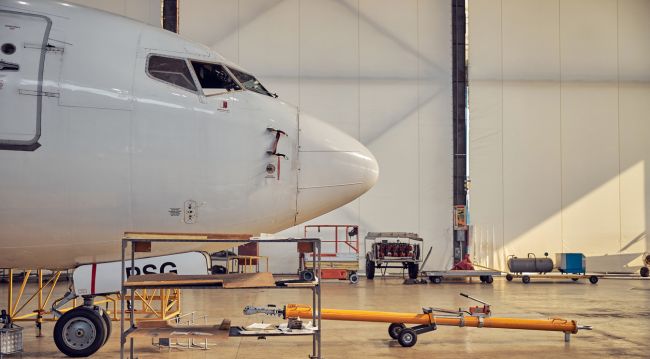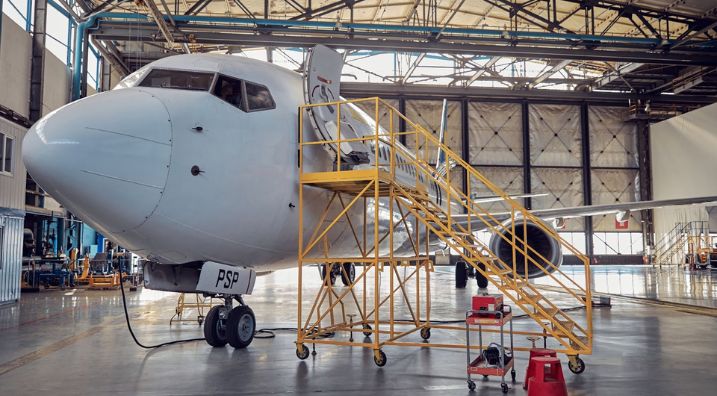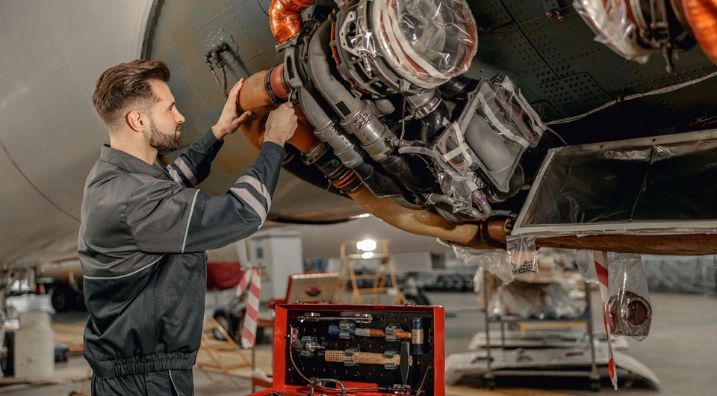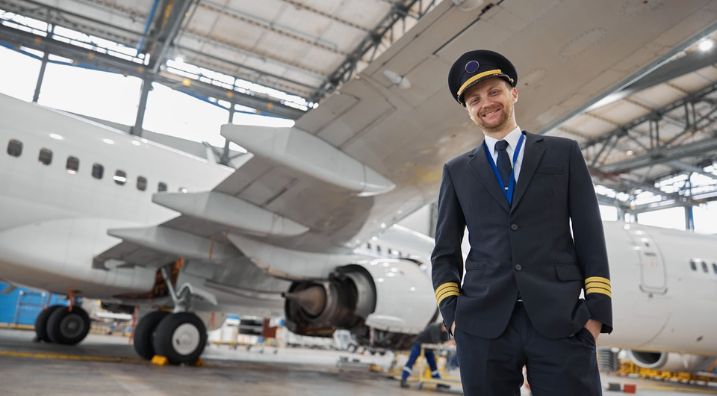December 3, 2025
On Pointe Podcast: Helping Family Offices Make Smart Aviation Decisions
Read More

Jet engine maintenance is of vast importance to not only safe, dependable operation of your jet, but also to residual value.
When considering jet engine program enrollment, it is important to consider your personal scenario. If your aircraft is new from the manufacturer, you’ll evaluate the decision differently than for a pre-owned aircraft. This is because understanding the history of participation in a jet engine program for pre-owned aircraft is paramount. If you are early in the acquisition process, you might decide to target an aircraft for purchase based on that history.
Further, the enrollment decision has a number of variables that must be taken into account. These factors depend on the specific engine in your jet, the prospective engine program options, your disposition as the operator, and of course, the market.
All scenarios and factors may be evaluated in a logical way using reasonable calculations and assessing risk.
We’ll walk you through 4 essential steps to help you find an answer: to enroll or not enroll?

In understanding the factors that influence decision-making in aircraft purchases, it’s essential to establish a clear perspective. The perspective you adopt can significantly shape how you interpret various scenarios and outcomes, depending on your specific situation as a buyer or owner. This framework allows for a more tailored analysis, addressing the nuances of different transaction types.
Contact Guardian Jet today to speak with an expert and gain tailored insights into your jet engine program enrollment options.
First, as mentioned, the assessment has various scenarios that steer the perspective of analysis:
Second, use the lens of your situation when evaluating the variables involved in the enrollment decision. These variables are categorized in 4 buckets for investigation: the engine, the program, the operator, and the market.
The engine is one of the most critical components of any aircraft, requiring careful monitoring and maintenance throughout its life cycle. Regular assessments ensure optimal performance and longevity, while the costs associated with major inspections or overhauls can significantly influence the overall ownership experience. Understanding these intervals and maintenance requirements is essential for both buyers and current owners, as they impact both operational reliability and long-term financial planning.
The engine undergoes trend monitoring which involves sharing diagnostic information with the engine manufacturer to track the health and performance of the aircraft engine. Through an aircraft engine program, when the parameters diagnose a condition that warrants maintenance, it is performed.
These intervals define when critical maintenance must be performed, either based on flight hours or the passage of time, ensuring the engine remains in optimal condition:
The engine manufacturer (Rolls Royce, Pratt & Whitney, Honeywell, Williams, GE) performs a mid-life or overhaul for a flat rate plus discrepancies. As an example, it could cost $1.5M per engine at midlife, and $3M per engine to overhaul.
There are yearly airframe engine inspections covering routine maintenance and, in some cases, the on-condition monitoring. These inspections typically involve tasks like oil changes, system checks, and parts replacements. Additionally, the engine’s overall performance is evaluated, helping to ensure that potential issues are identified early to maintain optimal engine health and safety.
The further the engine is from a mid-life or overhaul, the less financial concern. If an inspection is looming, it will typically affect the value of the aircraft as a multiple of the expected cost to cover the exposure to the next owner (think 1.25 times the estimate).
Second and third overhauls on an engine can be significantly higher cost than the first because engines have several high time / high cycle components (such as compressor
impellers, turbine discs, etc.). With Jet Engine Program Enrollment, these items will not need to be replaced in the first or possibly second overhaul.
The number of engines currently in service plays a crucial role in determining the availability of support, parts, and maintenance facilities.
Ensure your engine is in optimal condition and maximize its value. Schedule a consultation with Guardian Jet today.

Enrolling in an engine program involves a structured process that ensures consistent maintenance, financial predictability, and long-term value for aircraft owners. Each step is designed to streamline the management of engine performance and costs, offering comprehensive coverage for both planned and unplanned events.
A contract is established for a specific term, number of hours flown per year, and an hourly rate which is billed monthly. This pay-as-you-go amount means the jet engine maintenance events are at no additional cost when they occur. Programs are typically transferable as they build equity in the engine.
Service levels associated with hourly rates are often categorized using naming conventions such as Platinum, Gold, and Silver. The highest tier typically includes comprehensive benefits, such as no restrictions, loaner engines during overhaul, and priority service. In contrast, lower hourly rates may exclude high-cost parts, components with hour or cycle limitations, and loaner engines.
Aircraft engine programs are provided by one of the following:
Some jet engine program providers require predetermined annual minimum flight hours per year, despite how many hours you fly per year. This ensures that the engine receives consistent maintenance and support, regardless of usage, and helps the provider manage operational costs and maintenance schedules effectively while maintaining the engine’s reliability and performance.
Regardless of program, there are fees for the administration of the program in addition to the hourly rate paid. These fees cover the costs associated with managing the program, such as processing maintenance, scheduling, and providing customer support, ensuring the smooth operation and oversight of the engine's ongoing maintenance and service needs.
Engine program equity is transferable to the next owner, subject to a new contract which can have different hourly rates, annual minimums, etc. This allows for flexibility in ownership transitions while ensuring that the new owner benefits from the existing maintenance coverage, though terms and conditions may vary under the new agreement.
Under certain conditions with third party vendors (such as JSSI), the equity in the engines can transfer back to the owner who paid in, or to another airframe that the owner purchases. This option offers greater flexibility for owners, allowing them to recoup investment or apply it to future purchases.
Enrolling in a program mid-stream is usually accomplished at a buy-in equal to the sum of the payments that would have been made, had the airframe been enrolled. It can be researched quickly by asking the program provider to prepare a quote. There can be discounts applied based on the program manager’s willingness to add the engines to the pool.
Jet engine program enrollment status usually impacts financing terms. If you are financing an aircraft in a debt or lease structure, this should be considered as debtors and lessors prefer enrollment and may make their proposals reflect that preference.
Learn more about our comprehensive jet engine program options by speaking with a Guardian Jet enrollment specialist.

The decision to enroll in a program is often influenced by the unique needs and risk tolerance of the operator, who must weigh the potential costs of unexpected engine events against the financial benefits of coverage.
Not only do program participants pay as they go, but they also receive coverage for unexpected events such as Airworthiness Directives or Service Bulletins that may occur during an engine’s life after the original warranty has expired. This can be comforting in the case of new engine designs that do not have a large population or history of mid-life and overhaul inspections.
This can be helpful to pay for the engine restoration as you go, as opposed to a large one-time expense when the event occurs.
Fleet operators with significant experience operating and maintaining numerous engines are often secure with managing the exposure of not being covered. It also keeps operating costs lower. This approach allows operators to have greater control over maintenance schedules and costs, enabling them to respond quickly to any issues. Additionally, experienced operators can leverage their in-house capabilities to avoid the constraints of program agreements, providing more flexibility in managing their fleet.
An operator with years or decades of experience operating a turbine engine they know well is sometimes comfortable with the exposure of self-insuring. . This deep familiarity with the engine’s performance and maintenance needs allows them to confidently manage risks, making program enrollment less necessary and more cost-effective for seasoned operators.
Hours flown per year will dictate the feasibility of enrolling, especially if the jet engine program has utilization minimums. If an owner flies 100 hours per year and must pay for 400 hours as the annual minimum, this is prohibitively expensive.
Depending on whether the operator is the first owner versus second, third etc. can impact the decision to enroll. Initial owners may never expect to see an engine event based on their annual flight hours and typical ownership term. Second owners may want to capitalize on an airplane not enrolled for the same reasons as the first owner above. Conversely, they may want to take advantage of the equity in an airplane enrolled as it approaches an engine event.
At an owner’s specific discount rate, the present value or future value of money paid into a program over time may exceed the cost of an engine event.

When evaluating aircraft engine programs, understanding market trends and preferences is crucial to making informed decisions. Market dynamics can impact both the value and time to sell an aircraft, especially regarding enrollment in engine programs.
Understanding the market acceptance of aircraft engine programs, including what percentage of the fleet is enrolled, can guide your decision-making process.
It is useful to compare the percentage of enrolled aircraft using two categories: what is for sale versus what is sold. If enrolled aircraft constitute a larger percentage of sold than the for-sale population, that is meaningful information.
Every confirmed sales price can be measured against an appraised or intrinsic value. It is important to measure a premium or discount based on an apples-to-apples comparison of enrolled and not enrolled aircraft.
Measuring the time to sell for enrolled versus not enrolled aircraft can prove whether enrollment puts more money in your pocket. A shorter time to sell can add value to an aircraft in markets where pricing is falling at an average of 2% per quarter.
Optimize your aircraft’s value and sell faster with the right engine program. Contact Guardian Jet for expert guidance.
Third, the decision-making process includes both finite financial math and overall risk assessment. Use the factors applicable to your scenario to continue your evaluation.
Start by doing the math:
• And so on….
Then assess the risk:
We developed Guardian Jet's Program Enrollment Study to run the calculations using industry expertise and partner with clients to assess risk. The assessment of risk is always subject to the aircraft operator's and/or company's principles. The enrollment decision will lend to alignment with that disposition after factoring all variables into the math.
Last, the best way we can advise on aircraft engine programs is to examine the information discussed above and then pose a series of “if, then” statements.
Reviewing the responses from your perspective with all factors in mind will help you make a confident decision.
For illustration:
In the end, the answer reveals itself in the data and the business mind of the operator.
As a consultant/broker, I like enrollment because it provides liquidity to the asset with essentially zero-time engines every step of the way. It’s tough to sell airplanes within sight of a major event without taking a significant discount.
And as an adviser charting a safe, predictable ownership experience, I prefer jet engine programs.
But when the math, aircraft particulars, and client disposition say otherwise, I favor any well-thought-out, calculated decision.
Contact us today to chart a predictable and secure ownership experience.
Contact Guardian JetLearn the latest about aircraft sales, brokerage trends and more.
By submitting your information, you acknowledge that you may be sent marketing material and newsletters.
Your information is secure and will never be shared with any third party. View our Privacy Policy